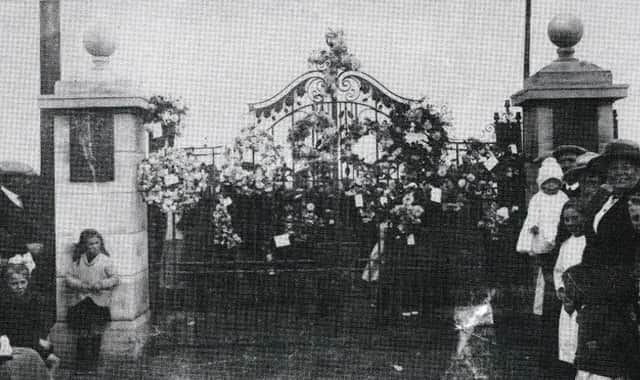Thornton Hibs memorial to mark 100 years


Last Friday, December 18, marked one hundred years to the day when a team played against Strathmiglo to informally open the War Memorial Park for recreation purposes.
The teams were playing for the Robertson Cup and the match was kicked off by Mr E.H. Brown of the Crown Hotel who had presented Thornton Hibs with a new football.
Advertisement
Hide AdAdvertisement
Hide AdThe idea of a public recreation area in which a war memorial could be erected was hatched many months before this match took place, following a meeting of around one hundred and fifty Thornton inhabitants and interested parties in May 1919.
A War Memorial Park Committee was subsequently formed and they negotiated the purchase of 22 acres from Captain Charles Barrington Balfour of Balgonie for what was considered a “reasonable price”. After a period of negotiation, the offer of £850 was accepted in December 1919.
The date of the opening was now predicted to take place in April or May of the next year once the memorial gateway had been erected at a cost of around £500, and the names of the men from the Black Watch (3rd Battalion, Royal Regiment of Scotland) and the King’s Own Scottish Borderers, who had made the ultimate sacrifice during World War I, had been inscribed on the bronze tablets.
Around this time, the football teams in the village – Thornton Rangers and Thornton Hibs – played at North End Park before moving over to the New North End Park in 1926.
Advertisement
Hide AdAdvertisement
Hide AdWhen Thornton Hibs turned junior in 1935, they finally established their home ground in War Memorial Park and raised funds to build the changing hut facilities required at the time which were opened by J.S. Martin, who was Secretary of the Fife Junior Football Association.
The local authority took over responsibility for maintenance of the park in the late 1950’s and the park became a protected ‘Centenary Field’ under the auspices of Fields in Trust in July 2015, safeguarding the use of the park for existing and future recreational purposes.